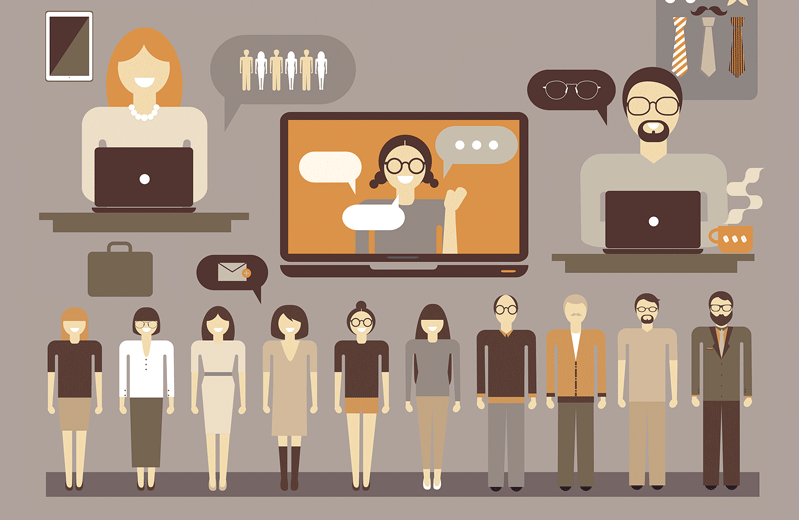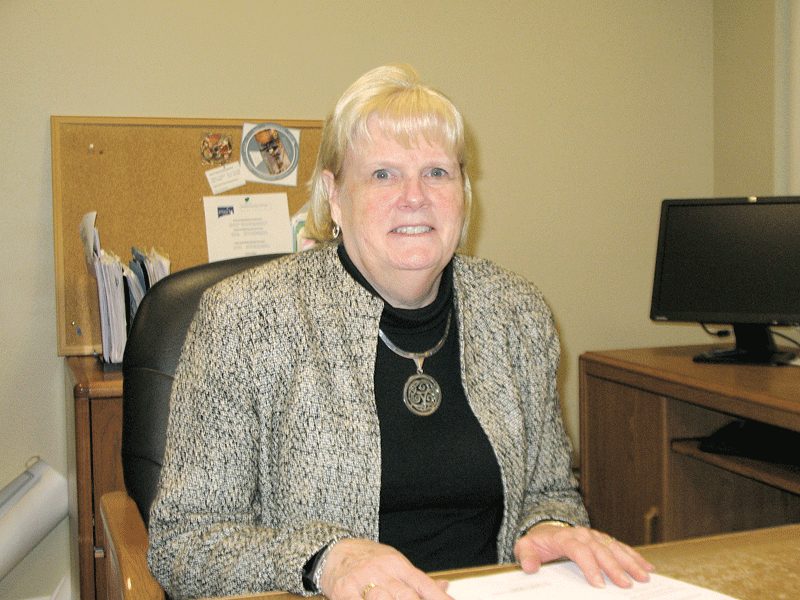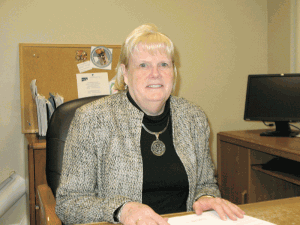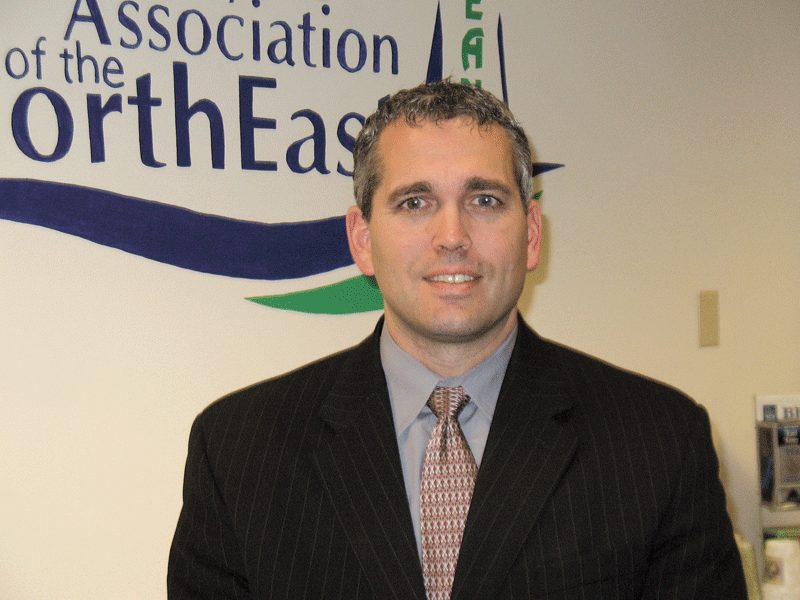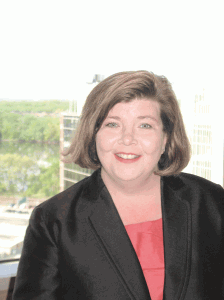Exercise in Problem Solving
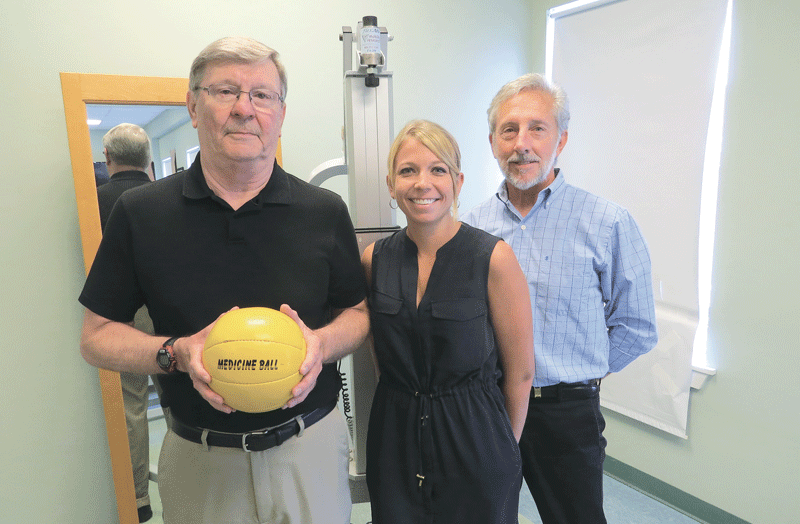
The managing partners at ECG, from left, Joe Kessler, Susan Lachowski, and Patrick Carley.
A quarter-century ago, Joe Kessler and Patrick Carley were working together to create cutting-edge solutions to problems with workplace injuries at East Longmeadow-based Hasbro (now Cartamundi). Later, after Carley left a position in academia, the two continued to collaborate on projects to identify and resolve issues in a wide array of workplaces. Today, with third managing partner Susan Lachowski, they are taking these efforts to a higher plane with a venture called Ergonomic Collaboration Group, a name that speaks volumes about what this company does — and how it does it.
When Shaun McConkey arrived at South Deerfield-based Pelican Products as director of operations a year ago, he found a company on the move.
As we reported back in May, this enterprise, long known for making hard-plastic cases for commercial, government, and military applications, was successfully diversifying into everything from coolers to suitcases to backpacks.
But amid all these green lights, McConkey saw a red flag. It took the form of a mounting number of soft-tissue injuries resulting from the processes (especially the literal heavy lifting) required to manufacture such products.
Desiring to ward off such injuries, he knew he would need some help, and also knew just who to call — meaning this wasn’t exactly a phone number he had to search to find.
That’s because he’d called it more than a few times before. Indeed, McConkey, Joe Kessler, and Patrick Carley go back a ways. The three were at Hasbro’s (now Cartamundi’s) sprawling manufacturing facility in East Longmeadow in the early ’90s. McConkey was director of manufacturing, Kessler was the in-house ergonomist, and Carley, a practicing physical therapist, joined him when the company decided to establish a physical-therapy clinic inside the plant to respond to the growing number of musculoskeletal-related injuries, now referred to as musculoskeletal disorders, or MSDs.
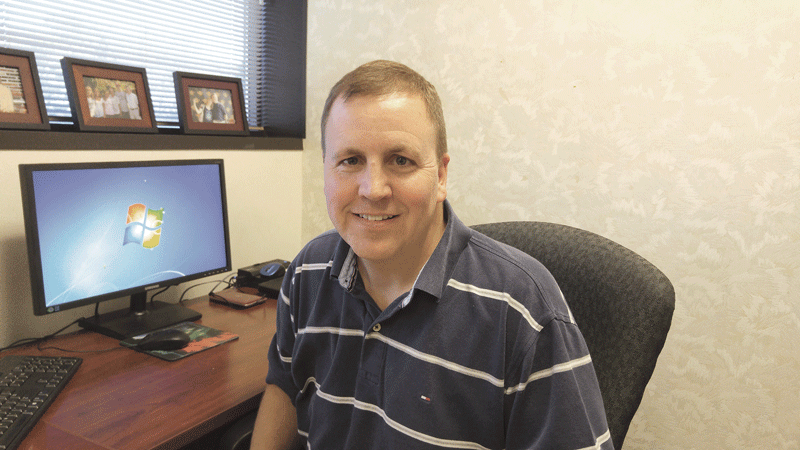
Shaun McConkey, currently director of operations at Pelican Products, has called on the team at ECG on many occasions during his career in manufacturing.
Fast-forwarding a little, Carley left the clinic at Hasbro in 1996 to take a full-time faculty position at American International College. But the two continued to work together — often with Carley’s students — on projects to improve work processes and reduce the potential risks for MSDs.
One of their collaborative efforts was at the U.S. Tsubaki Automotive, LLC timing-chain-manufacturing facility in Chicopee, where McConkey, who was by then with that company as operations manager, sought their help with reducing and perhaps eliminating the threat of injuries related to the cleaning of a machine known as a ‘nut former.’
Their involvement led to the creation of a chest-resting bench — one we’ll hear much more about later — that speaks volumes about how a venture now known as Ergonomic Collaboration Group (ECG), LLC goes about its work.
It takes a scientific approach, said Dan Oliveira, environmental health and safety specialist at U.S. Tsubaki, one that engages employees in every step of the process and therefore achieves a critical volume of buy-in.
“They involved employees and helped them facilitate this change,” he explained. “That’s better than simply making a change and saying, ‘this is the way we’re doing things now.’ You’re having employees understand why that change is being made.”
The team at ECG, which now includes a third managing partner — Susan Lachowski, one of Carley’s students, who possesses a PhD in exercise physiology — intends to use this approach to extend its business portfolio well beyond Hasbro and Shaun McConkey’s career ladder.
And it is already moving strongly in that direction, adding clients ranging from the postal service to Merrill Lynch; from Hamilton Sundstrand to Riverside Industries.
Such growth is partly explained by the fact that ECG offers the right services at the right time — when employers, faced with ever-advancing technology and the ever-rising cost of doing business, want to fully exploit the former while perhaps reducing the latter, especially workers’ compensation costs.
For this issue and its focus on the modern office, BusinessWest talked with the team at ECG, as well as with some of those they’ve worked with and for, to identify potential problems and orchestrate solutions. You might call their endeavors in the field — as well as current efforts to grow their business — works in progress.
Stretching — the Truth
Kessler calls it simply the ‘blinking program,’ and no, it’s not what you might think.
Just as one’s eyes blink to keep them lubricated, the body’s muscles should blink to keep them from becoming stressed, or injured, he noted. But while eye blinking is mostly a reflex, or semi-automatic action, muscle blinking is not; it must be orchestrated, if you will.
Hence that word ‘program,’ which in this case refers to a regimen of movements designed just over a decade ago for employees at Hasbro while Kessler was still there and collaborating with Carley and some of his students on various projects.
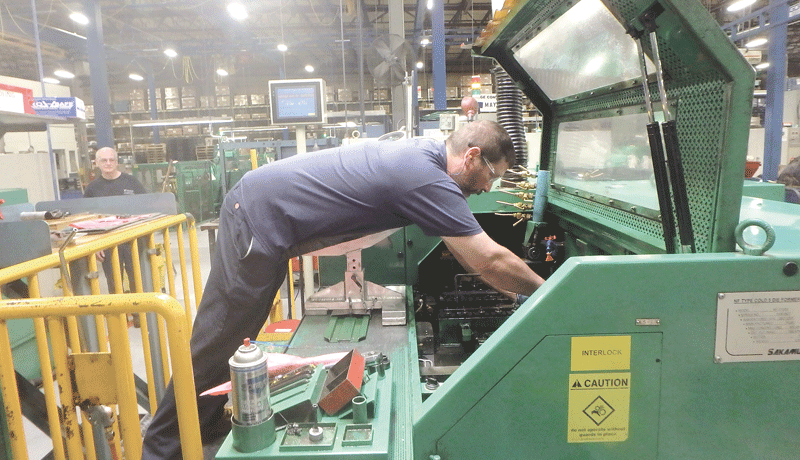
The ‘chest rest’ at U.S. Tsubaki’s timing chain plant in Chicopee is an example of ECG working with a client to solve a potential problem.
“If you stretch five minutes before your shift starts and then don’t stretch for the rest of the day, how effective can that be?” Kessler asked. “So we instituted a ‘blink’ program; we designed a whole series of stretches that the employees could do discreetly, like when the line came down for a minute or if they were going to their break area.
“These were simple things, like shrugging the shoulders,” he went on, “just to stretch your muscles out and give them a break and let them breathe. The point was to do this several times a day, and we did it for the entire factory.”
Together, Kessler and Carley initiated a number of programs and initiatives for the game maker, many of them worthy of the descriptive phrase ‘state-of-the-art.’ That includes the physical-therapy clinic itself.
“We put it right inside the plant — if people got hurt, they went to medical, they were cleared and sent to physical therapy, which was right on the factory floor,” Carley said of the facility, established in 1991. “It was pretty forward-thinking stuff.”
And there was more of that to come, he went on, adding that he and Kessler were eventually assigned to the same committee at Hasbro that was charged not only with treating people after they were injured, but with developing strategies to keep them from getting injured in the first place.
“The committee tasked us with going out to the different work areas and try to determine what it was about the work process, the machine, or whatever it might be, to reduce exposure to injury,” he explained, adding that most problems were, contrary to popular belief, not with the back, but with upper extremities and arms.
“People were putting those packages of little green houses in boxes something like 4,000 times a day,” he told BusinessWest, before being corrected by Kessler, who said the number was probably closer to 15,000.
To reduce those injuries, the company, working on the advice of Kessler, Carley, and those they were working with, changed work processes (to reduce how far one would have to reach, for example), adjusted machines, instituted work rotations when needed, and, in some cases, changed or instituted policies, such as the limits placed on how many pounds employees would lift at a given time.
The initiatives at Hasbro would eventually yield accolades from OSHA , specifically, its Voluntary Protection Program (the company’s ergonomic program became the best practice in 2005). And in many ways, they laid the groundwork for the business that would become ECG.
“One thing led to another — we took some of the things we learned at Hasbro and applied them at Hamilton Sundstrand or at the post office, for example,” said Carley. “Other companies were calling us, and we started getting into office ergonomics.”
 One of the companies that called was the Springfield office of Merrill Lynch, which was having some issues with new information technology.
One of the companies that called was the Springfield office of Merrill Lynch, which was having some issues with new information technology.
“They changed over to flat screens, and when they put those screens up, they left the keyboards over here,” he said, using his hands to show there was some distance between the two. “And they were wondering why people’s necks were hurting them. They said, ‘you need to help us figure this out.’”
Documented success with helping a host of clients figure things out has been a key ingredient in the company’s efforts to grow its portfolio, he went on, citing U.S. Tsubaki’s chest-resting bench as a perfect example.
Body of Evidence
Bringing this seemingly simple piece of equipment to reality — meaning everything from its design to its implementation — came about through a scientific, or academic (but also collaborative) approach that enabled the employees who would be using it to play a huge role in its development.
Kessler calls it “engineering a problem out.”
It all begins with observation, interviews with employees, and other steps to pinpoint problems and also problems in the making — in every sense of that phrase. Then comes the work to devise a solution. As Oliveira mentioned, employees were front and center during that step as well.
Backing up a bit, he said employees were previously required to bend over these machines, unsupported, for long stretches as they cleaned them, presenting a risk for back injuries. Also, as they bent over, they were supporting themselves by putting one hand on an oily surface, presenting the possibility of acute injury.
“ECG enabled us to be proactive about this, rather than reactive,” he said, “and say, ‘there’s the potential for injury here, and we want to resolve it before anything happens.’”
The chest-resting bench not only reduces the threat to back injury, but it also improves productivity, said Carley, adding that Tsubaki now plans to put it into use worldwide.
But while responding to problems related to workplace injuries with engineering solutions is a big piece of ECG’s workload, keeping employees healthy, limber, and thus more out of harm’s way is also part of the equation, and it will only grow in significance in the future, said Carley.
And the addition of Lachowski, who focuses on using exercise science to improve work efficiency and safety, effectively “closes the circle,” as he put it, and enables ECG to provide a comprehensive roster of services, including prevention.
“My focus is on proper biomechanics and keeping the employee healthy through physical activity,” she explained. “If we can do that, we can reduce the threat of injury.”
As an example, she noted how ECG helped Riverside Industries — which provides services including life-skill development, rehabilitation, and employment options to adults living with developmental disabilities — to attain a grant from the Mass. Department of Industrial Accidents. It is being used for safety training for all employees involved in client handling, transfers, and transportation.
The program includes progressive stretching and exercising, in addition to a ‘train-the-trainer’ program to continue the safety efforts, she went on, adding that such efforts are critical to creating a culture focused on safety.
At Pelican, a train-the-trainer initiative will be part of a comprehensive response that is still in the formative stage, said Kessler, adding that stretching and exercise programs will likely be accompanied by changes in production processes to reduce exposure to injury.
In many ways, work at the Pelican plant illustrates the full range of ECG’s services and its efforts to customize solutions for clients.
“We have an educational approach to every project that we do, and we tailor each project to the company itself, because one size doesn’t fit all,” said Lachowski. “We really want to educate the workers, as well as the companies, and give them the tools to continue on after we’ve left.
“Our approach isn’t to go in and say, ‘this is the way to do it; you should it our way,’” she went on. “Many people don’t respond to that. That’s why we observe and ask questions, and do a comprehensive educational piece, so they’re in the driver’s seat.”
Looking ahead and toward where this company might go — in terms of what he anticipates will be controlled growth, but also specific assignments — Carley said the modern office and modern manufacturing facility are laden with potential ergonomic issues and potential problems.
Indeed, at a time when many professionals work with not one computer screen in front of them, but two or even three, attention must be paid to everything from where they’re positioned to their height off the desk.
And that’s just one small example of the importance of ergonomics today, said Kessler, noting that, as more individuals spend eight, 10, or 12 hours a day at a desk, attention must be paid to how they’re doing all that work and how it might impact everything from their vision to their back — to their productivity.
Which brings him back to that notion of ‘muscle blinking’ he described, a concept that encompasses everything from stretching before and during work to getting up and walking around, to perhaps not sitting at all and instead investing in a standing desk.
“When people are healthier, productivity is better, quality is better — if you’re sitting on a line and not feeling well, how good is the product? — it’s all interwined,” said Kessler in summing things up.
Limber Yard
As he talked about ECG, its reason for being, and its enormous potential as an entrepreneurial venture, Kessler summoned some numbers that put matters in perspective in a manner all business owners and managers could appreciate.
“There’s a rule of thumb out there that we used to use … if you have a $140,000 shoulder operation, and you’re a self-insured company, you have to sell 10 times that amount in product to make that up, because all that comes off your bottom line,” he said. “The most important thing is keeping people healthy, obviously, but by doing so, companies can save themselves a lot of money.”
Those numbers, and that reality, speak to why there is ever-increasing attention being paid to workplace wellness, if you will, and the broad realm of ergonomics.
And they also explain why the future appears extremely bright for a venture that has problem solving in the modern office down to a science — literally.
George O’Brien can be reached at [email protected]
“Put in plain, non-legalese terms, the decision significantly increases the likelihood that one or more of your handbook policies are unlawful in the eyes of the NLRB. It also applies to all private-sector employers — including those without a union presence.”









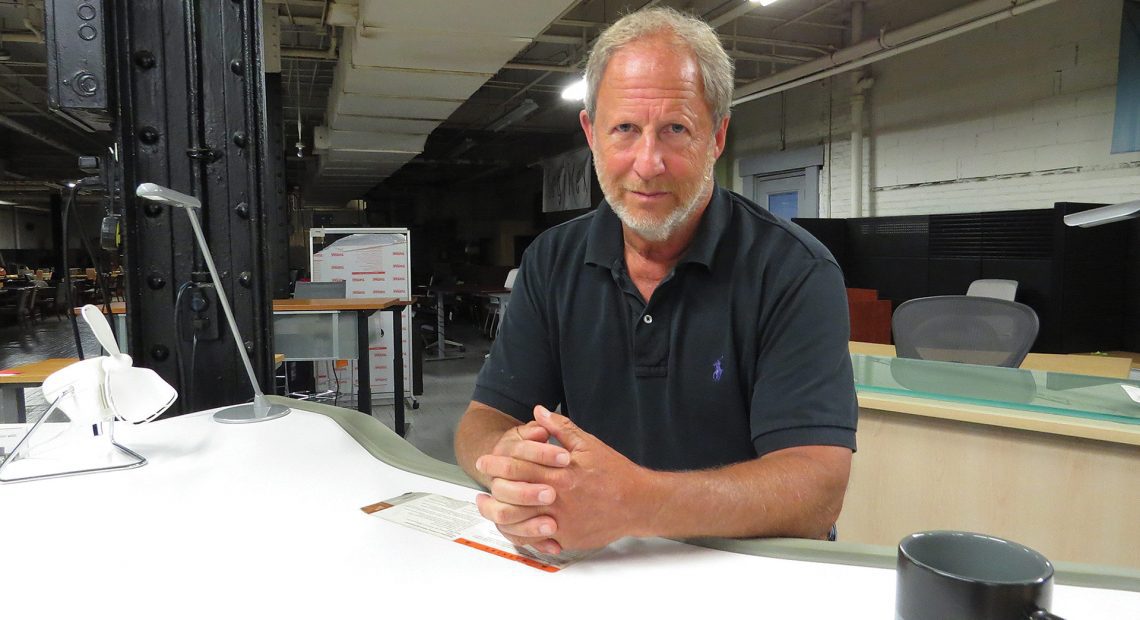


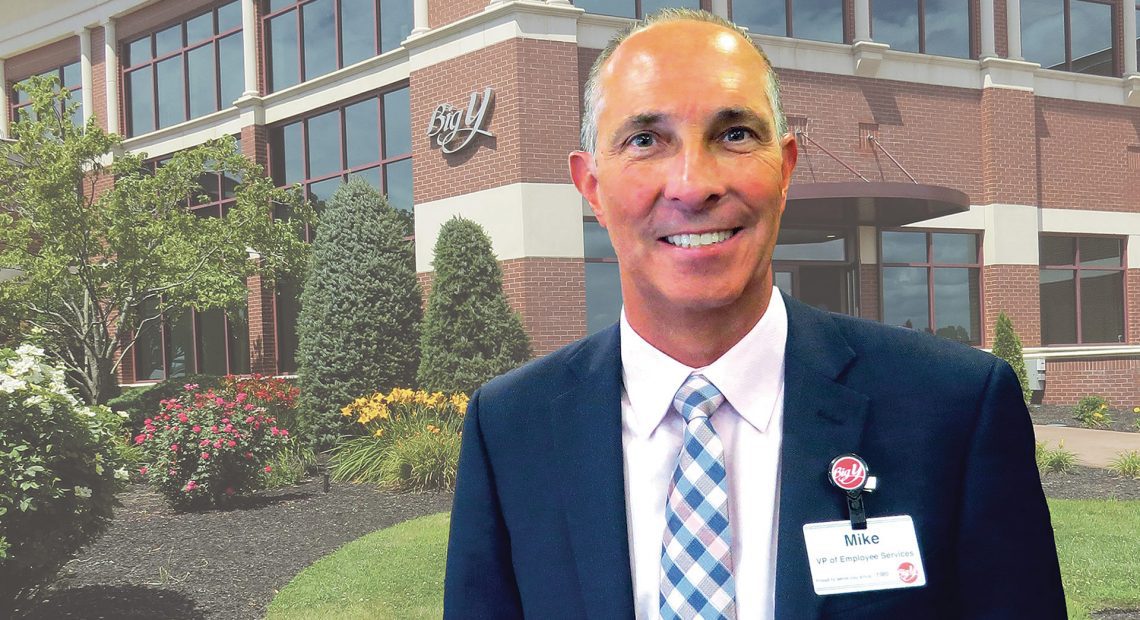
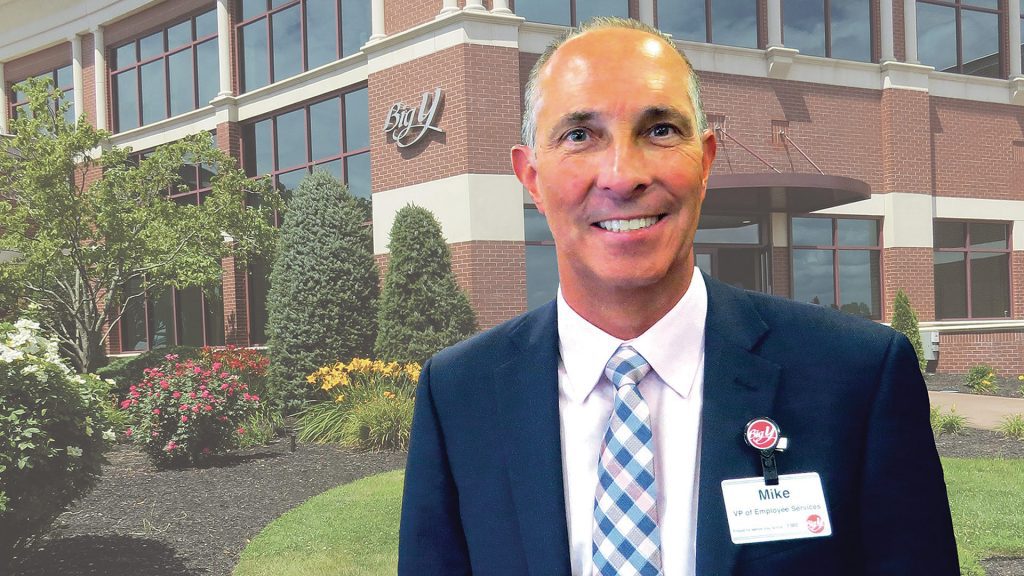


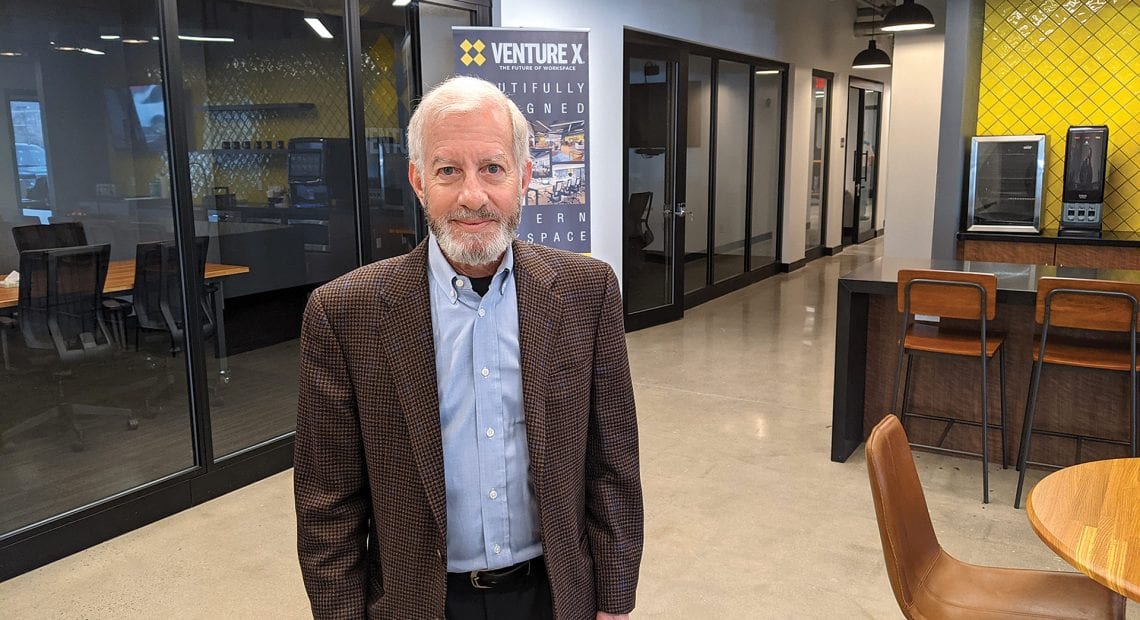
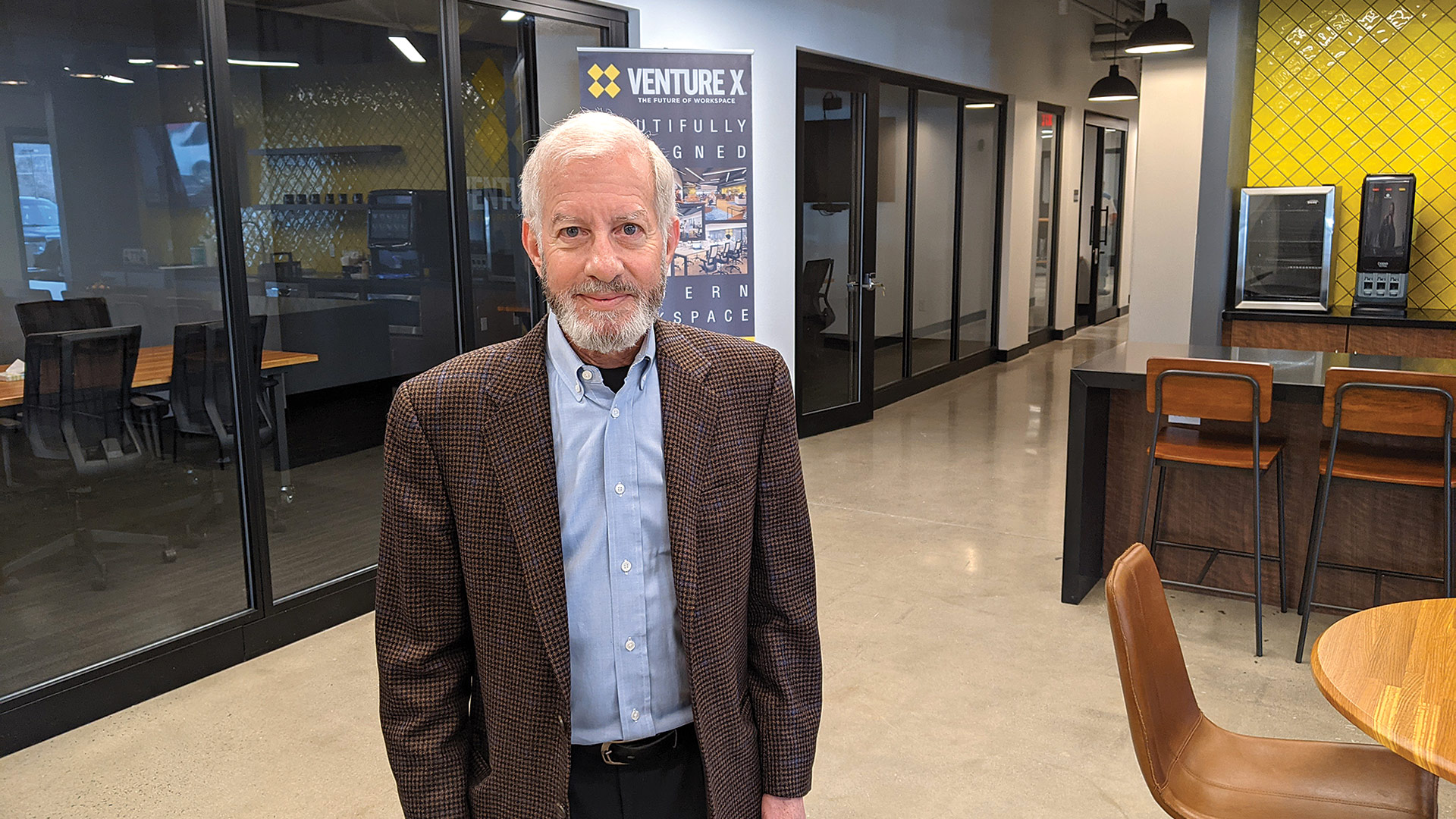
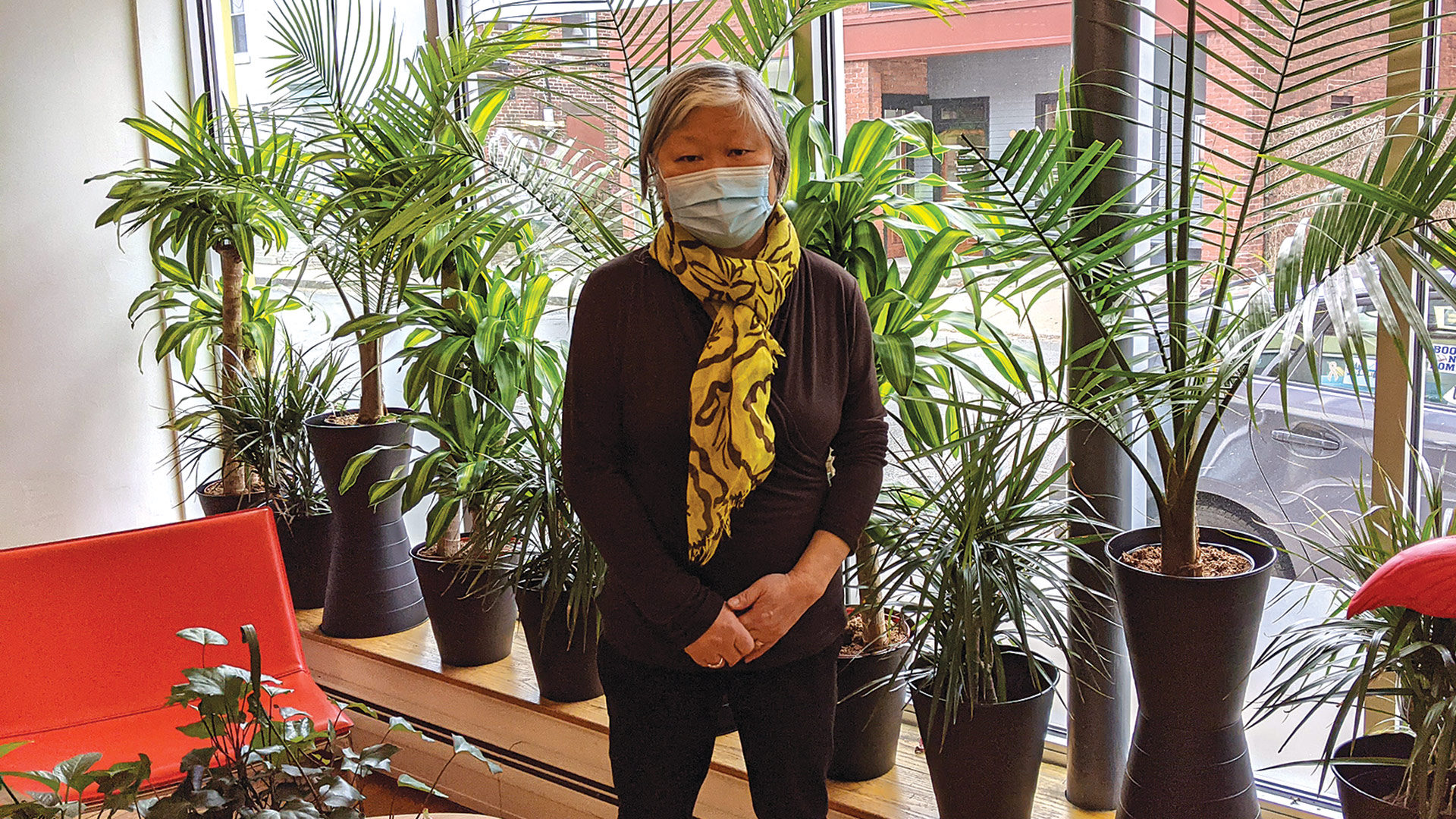
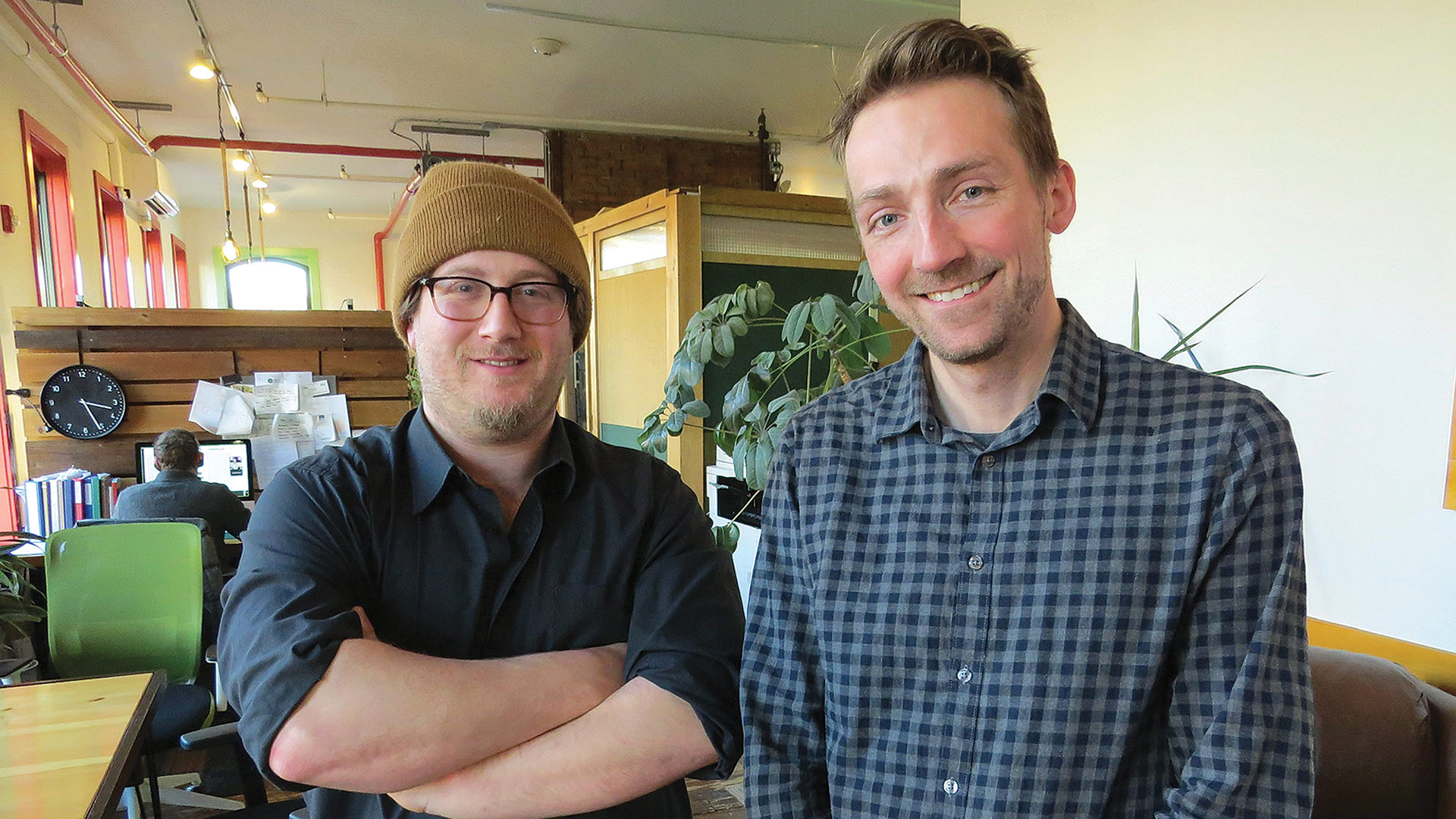


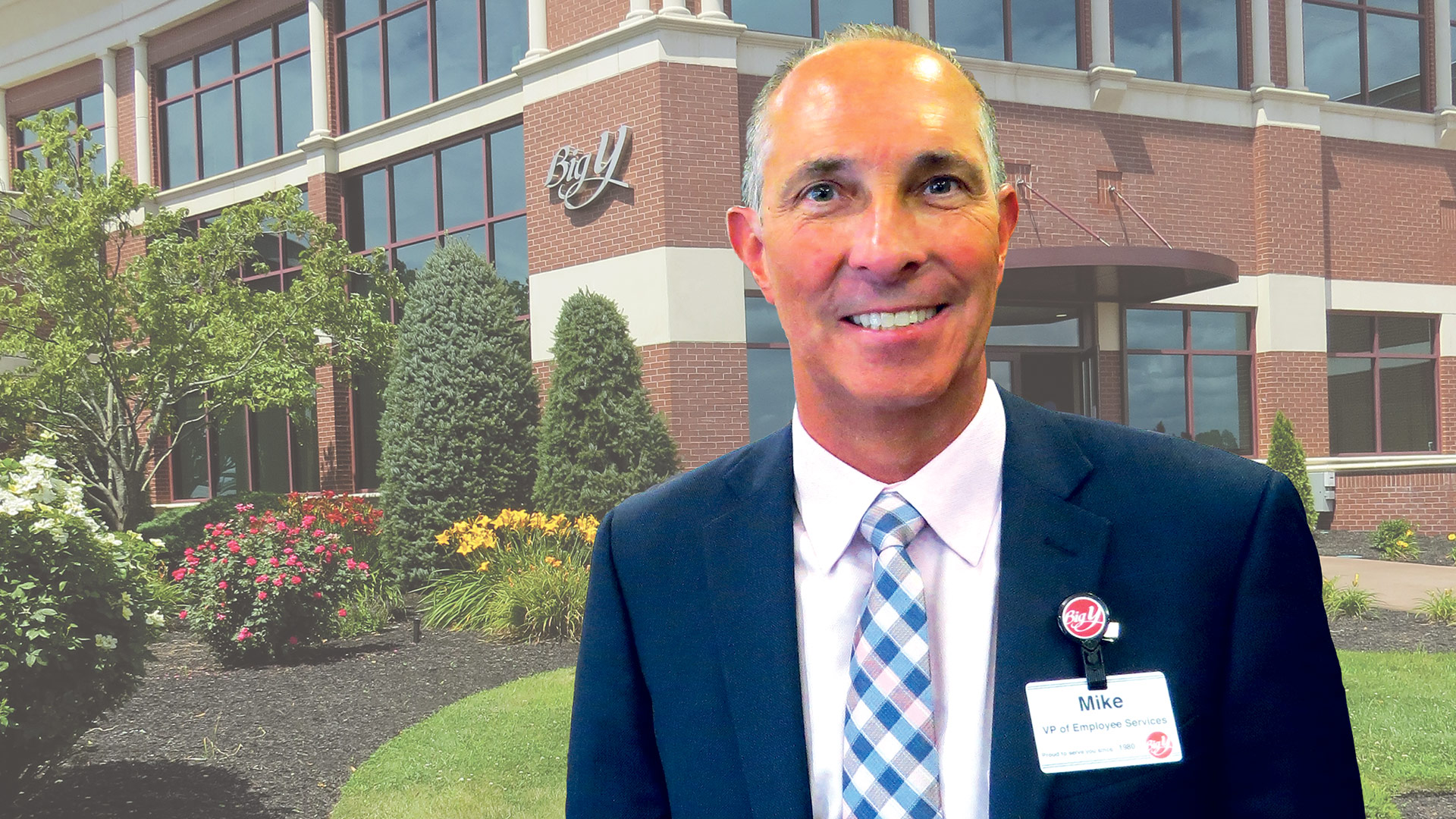
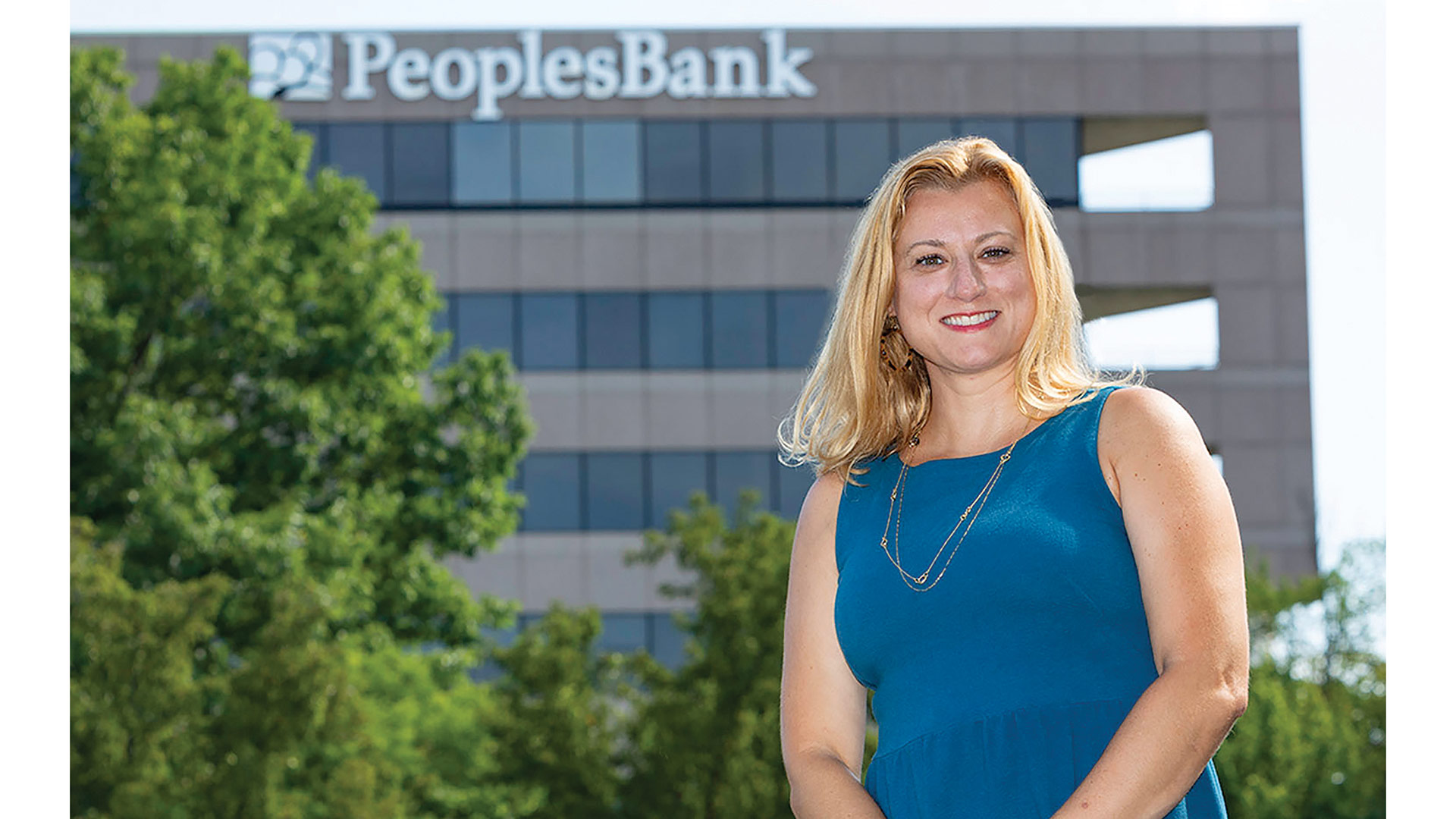
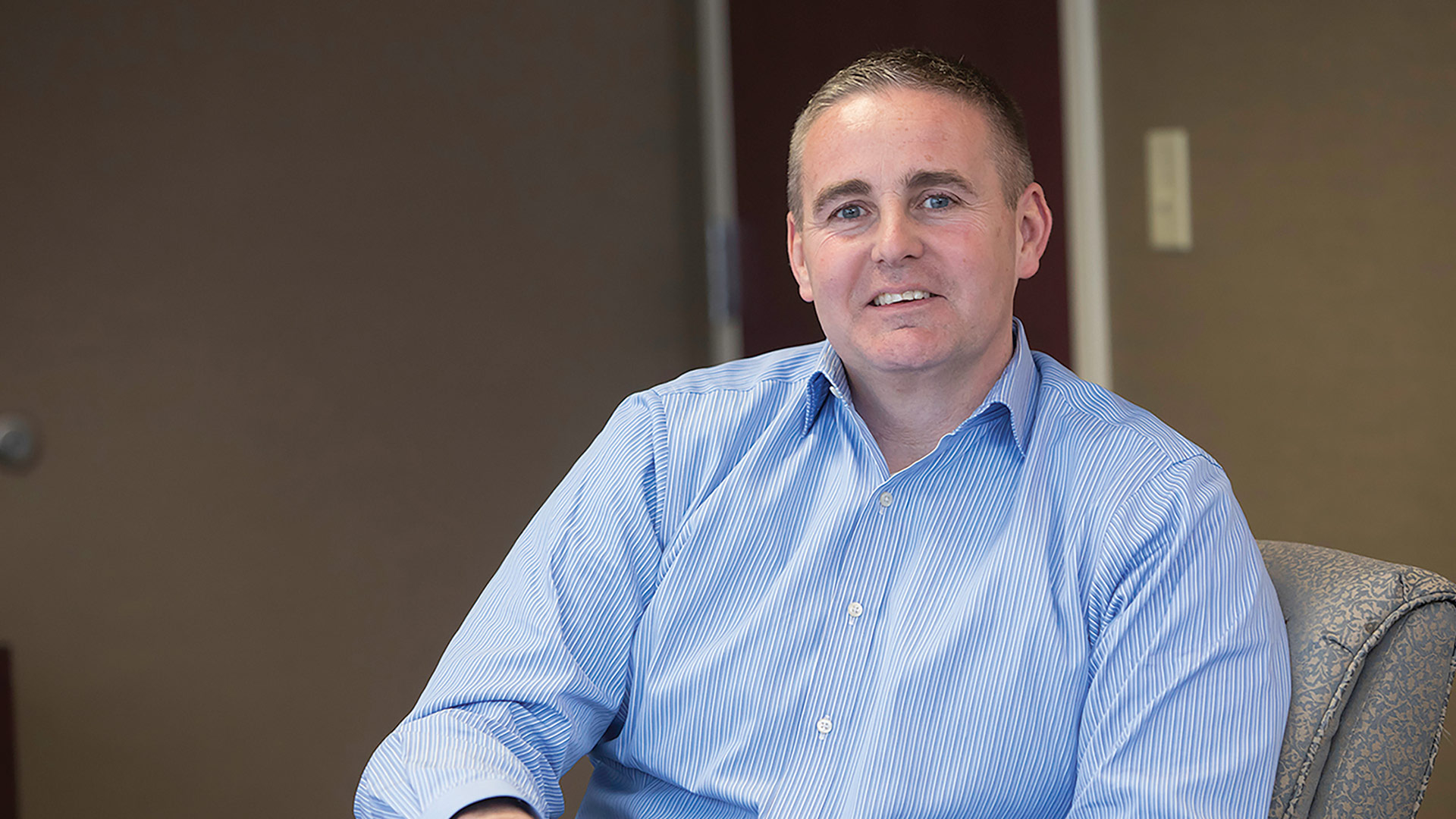


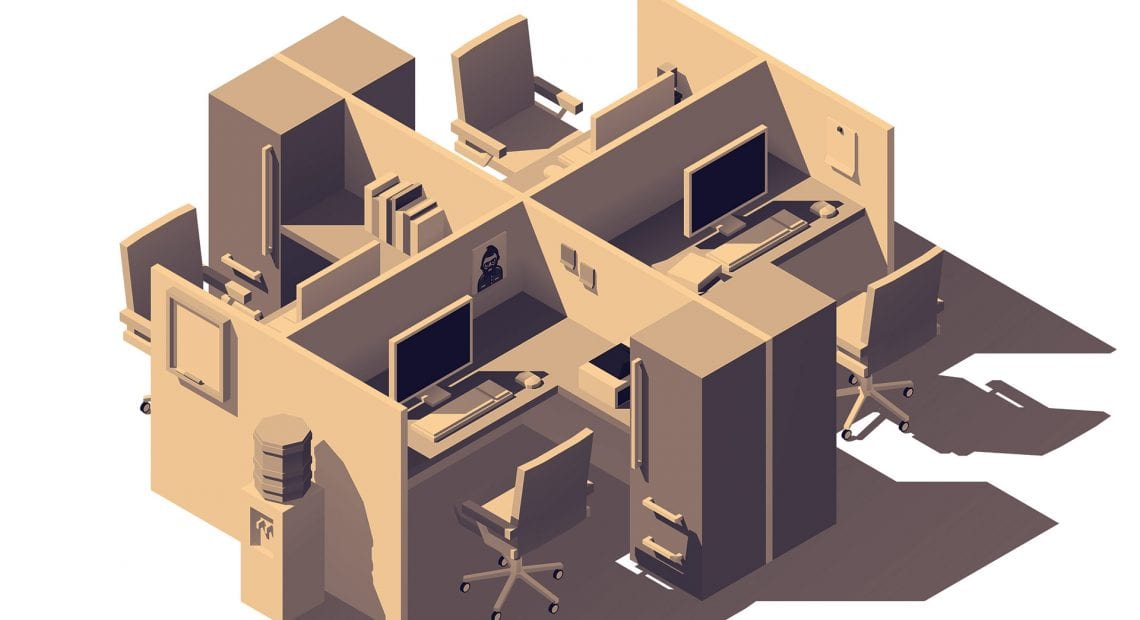
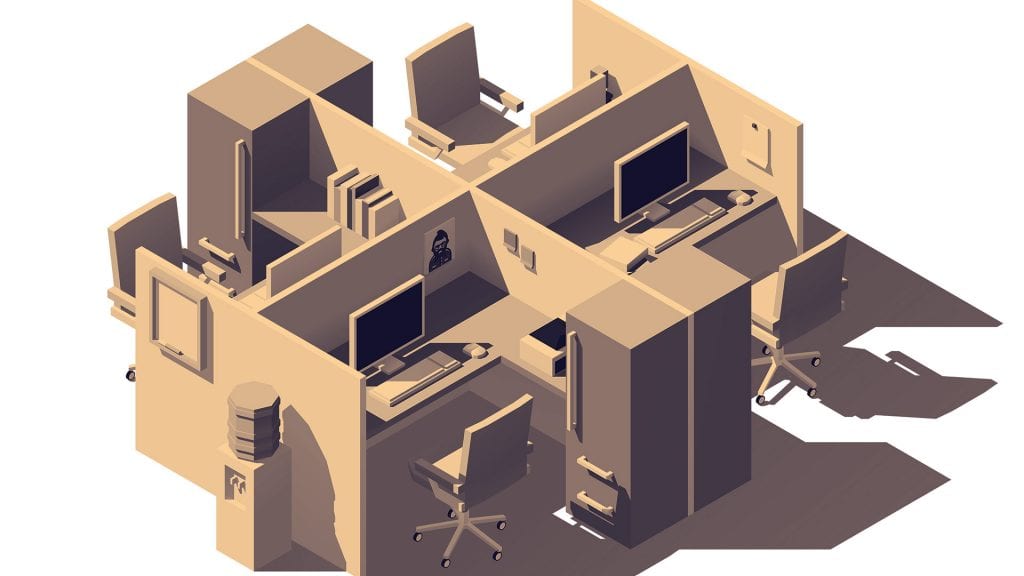 Mark Proshan says predicting what’s coming next in his business — office furniture and design — has always been a difficult assignment.
Mark Proshan says predicting what’s coming next in his business — office furniture and design — has always been a difficult assignment.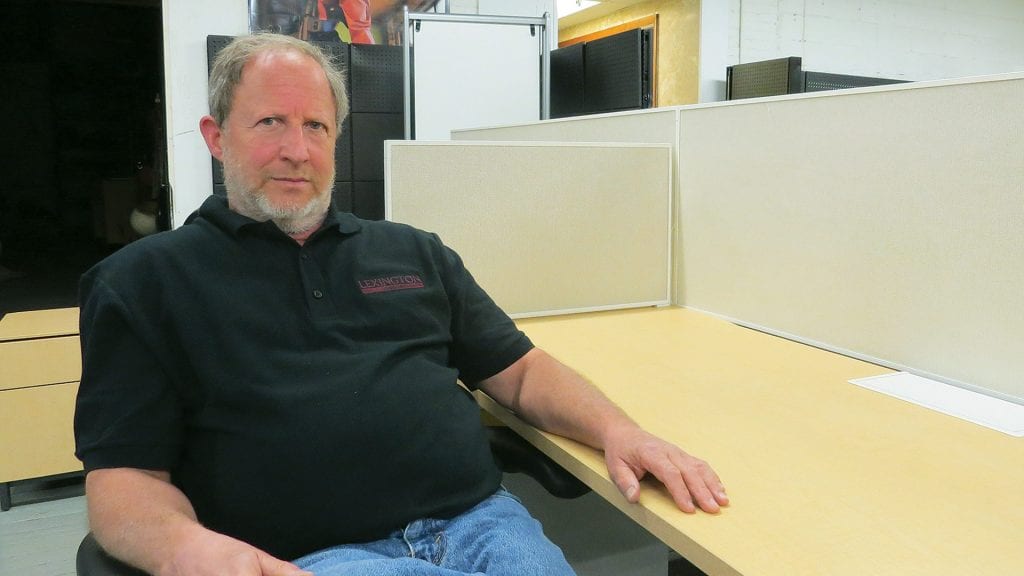

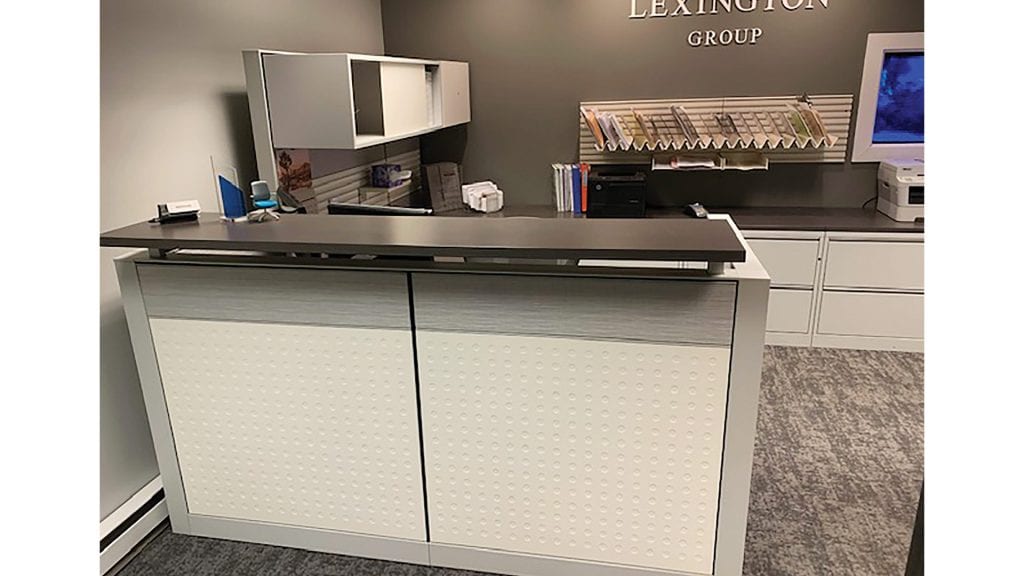
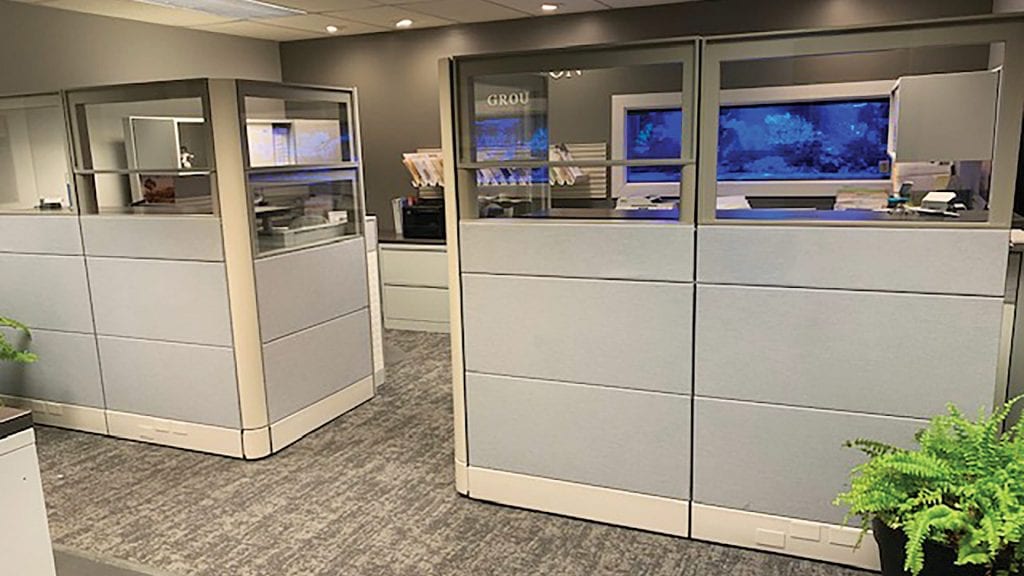
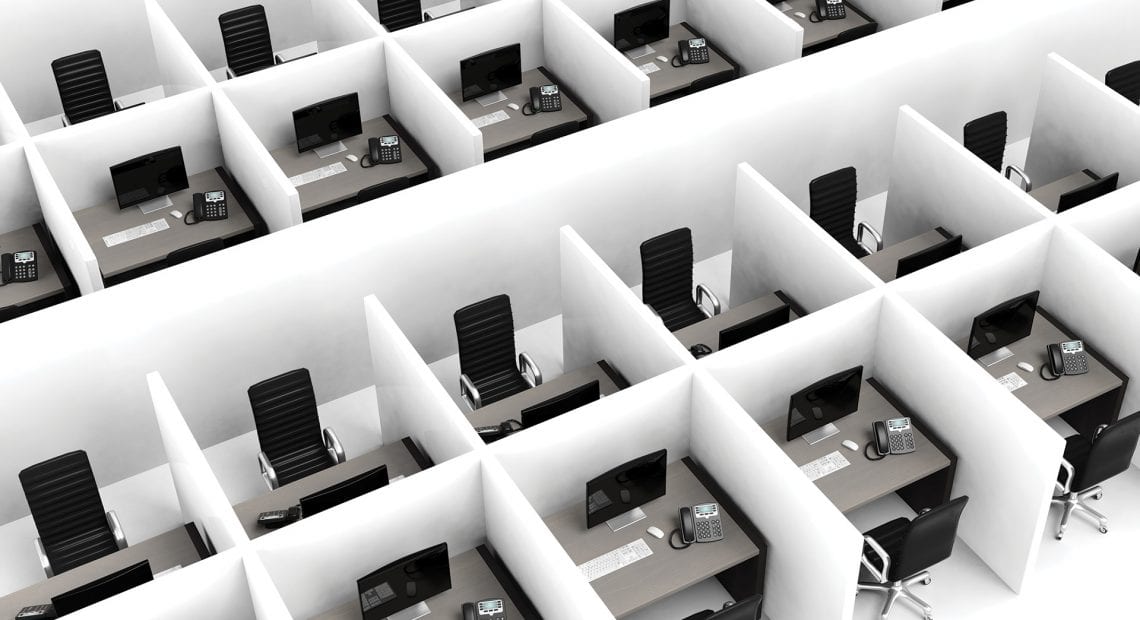
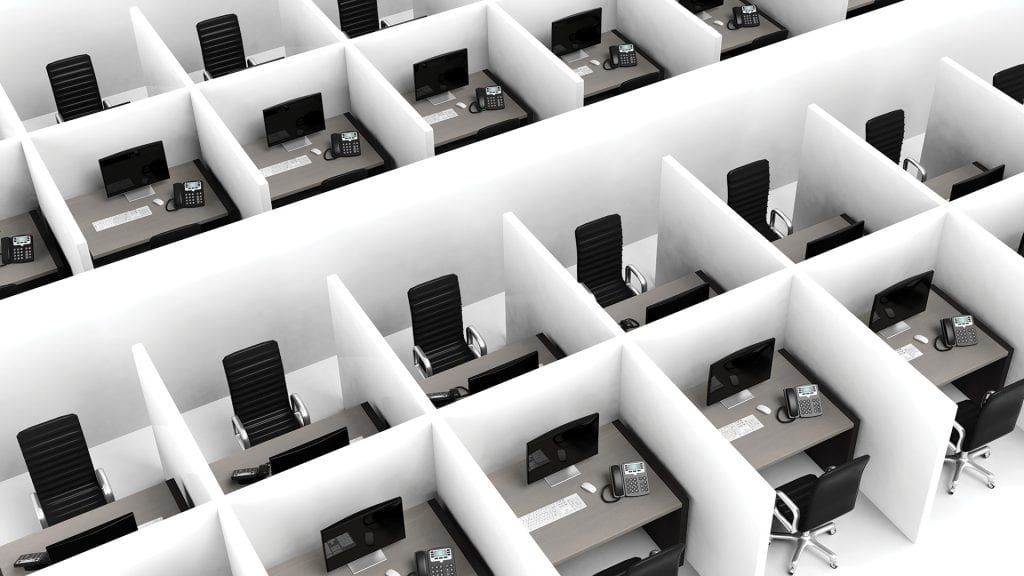


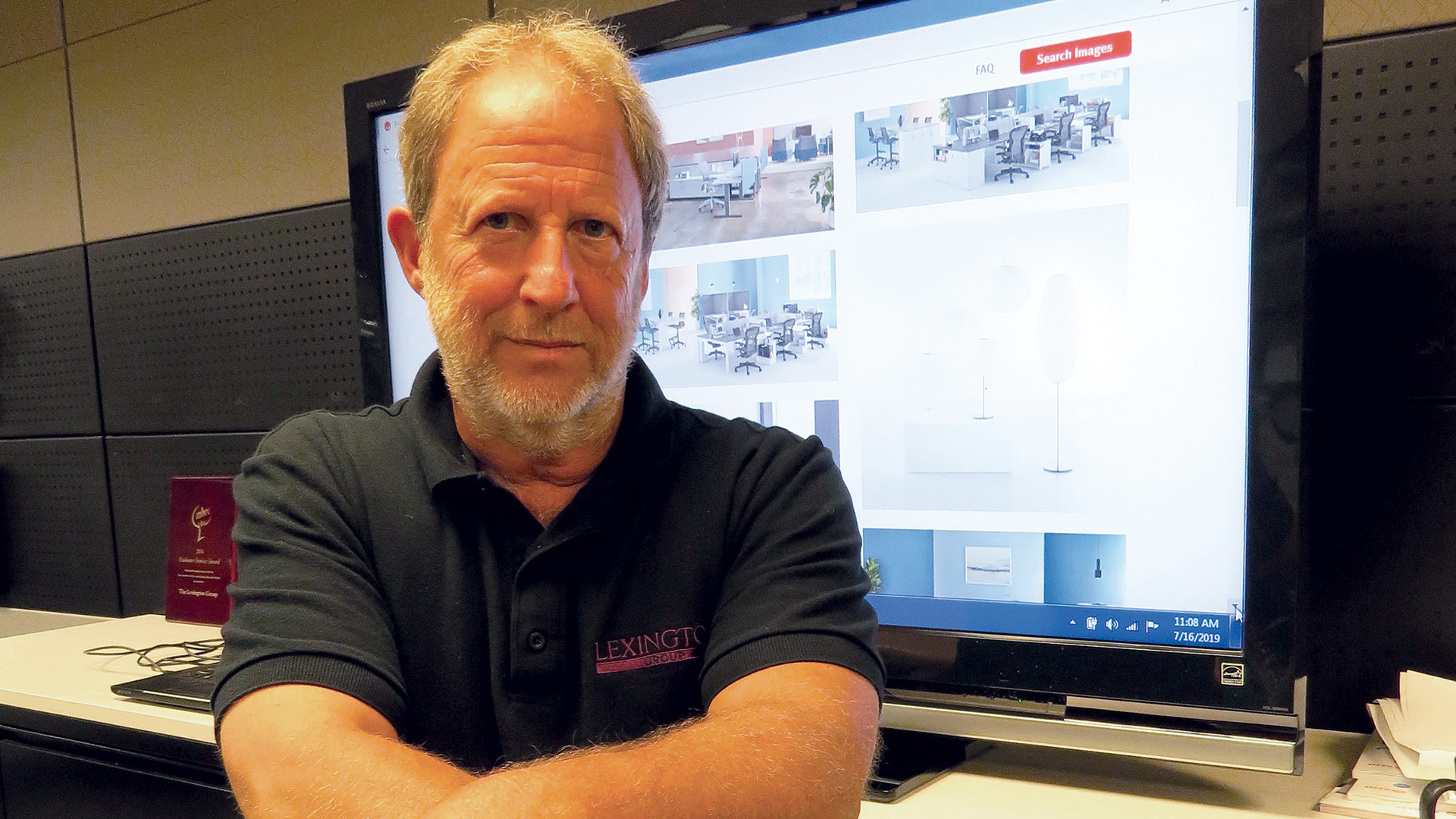
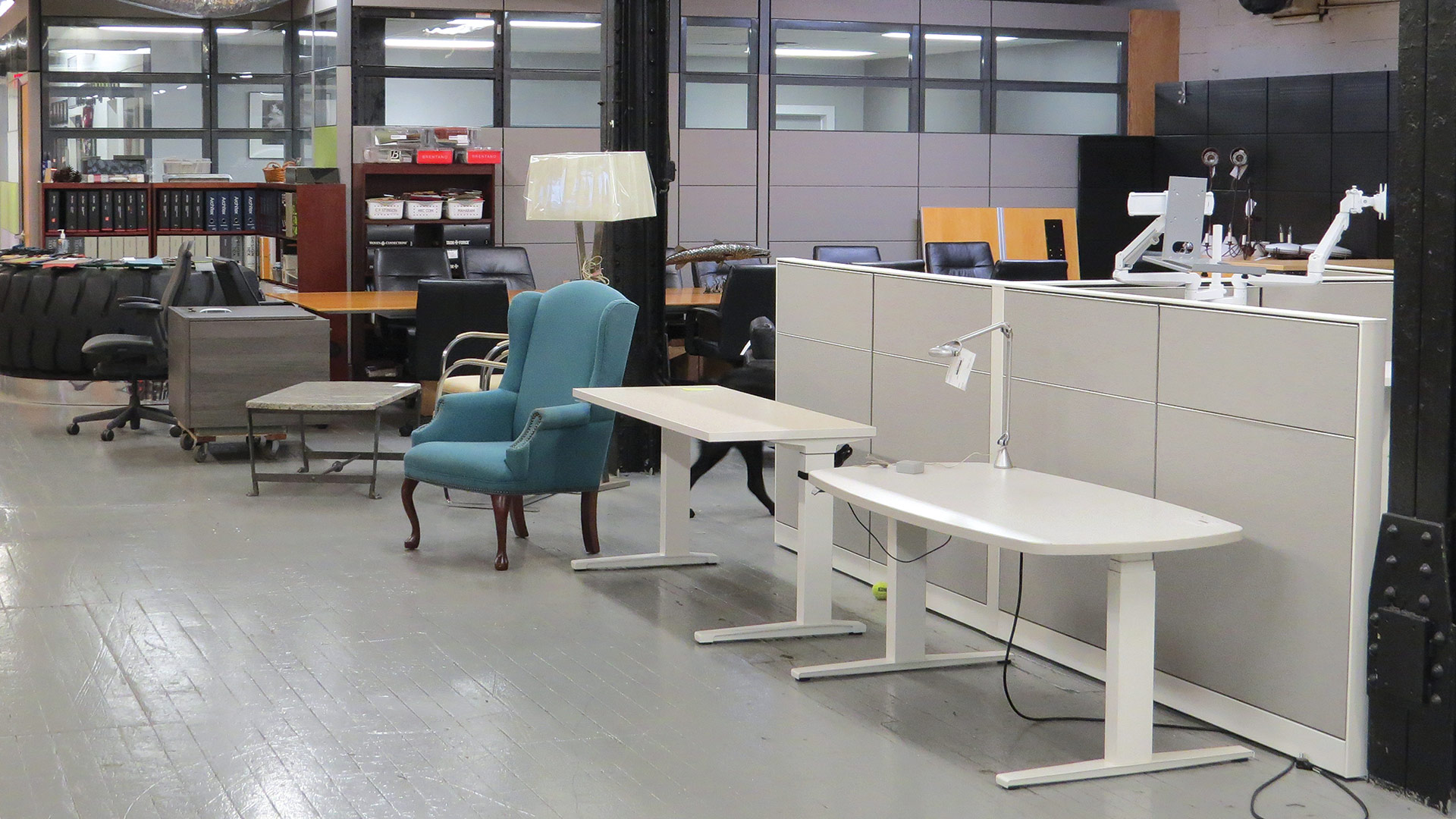






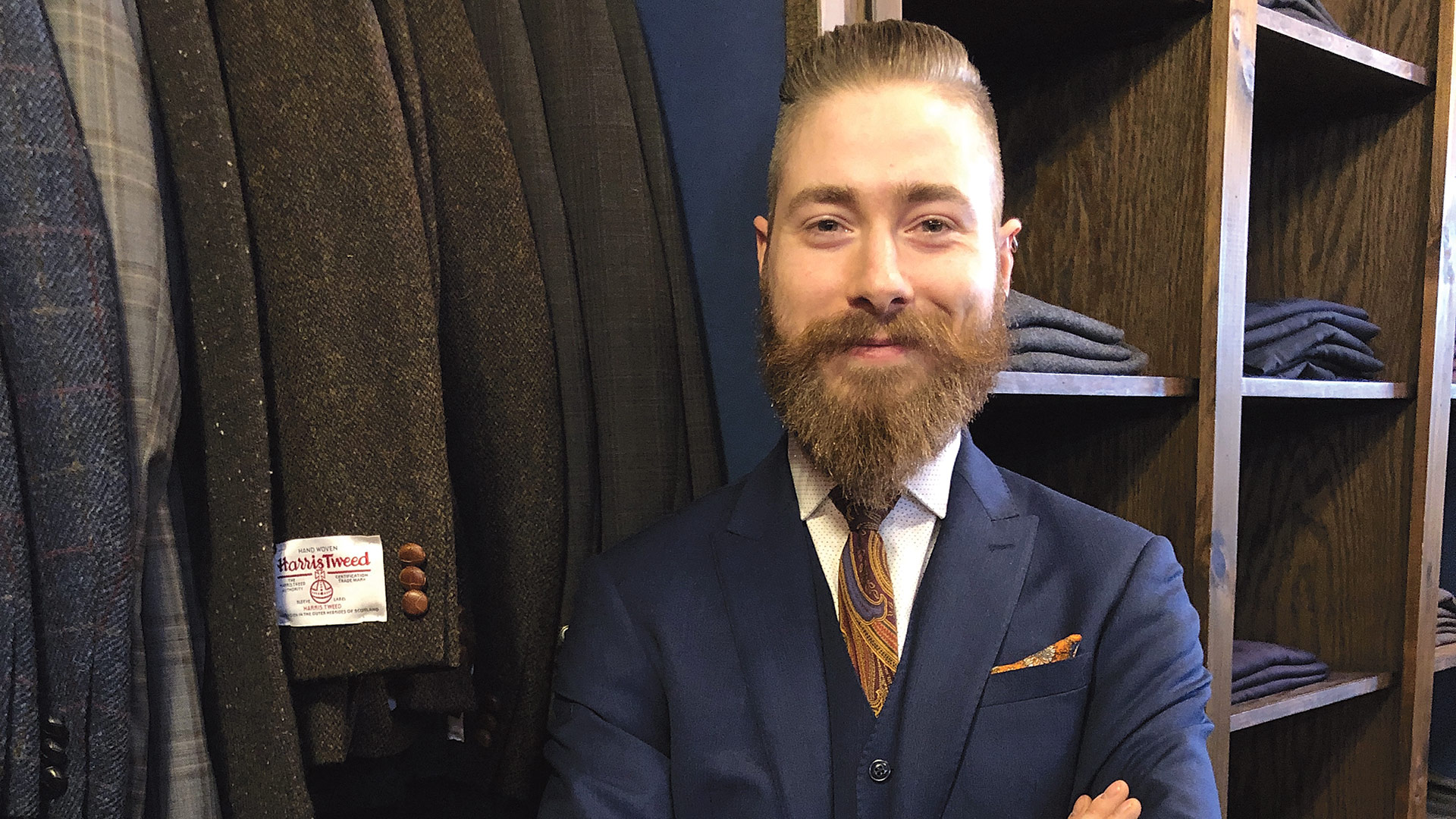
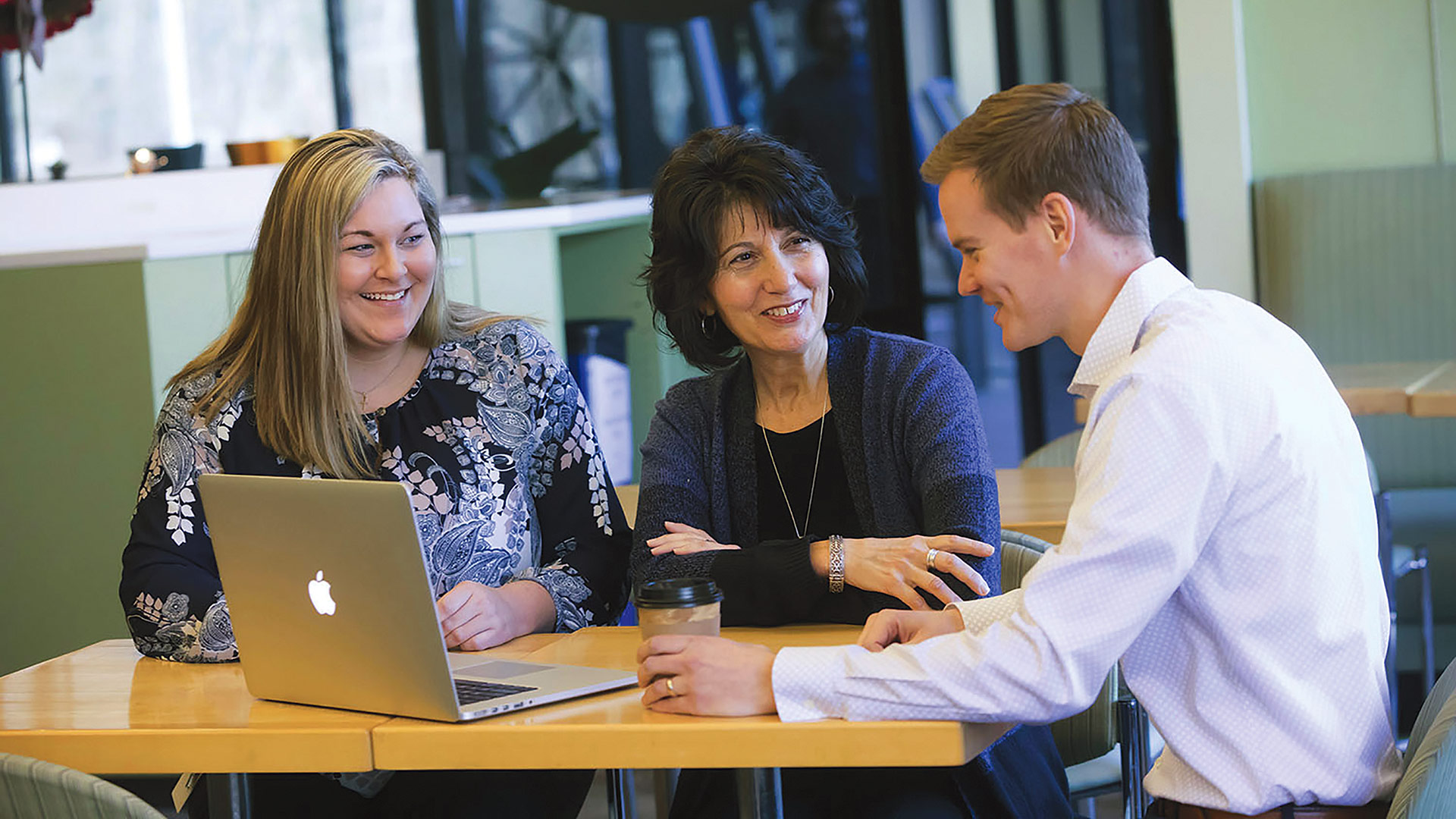
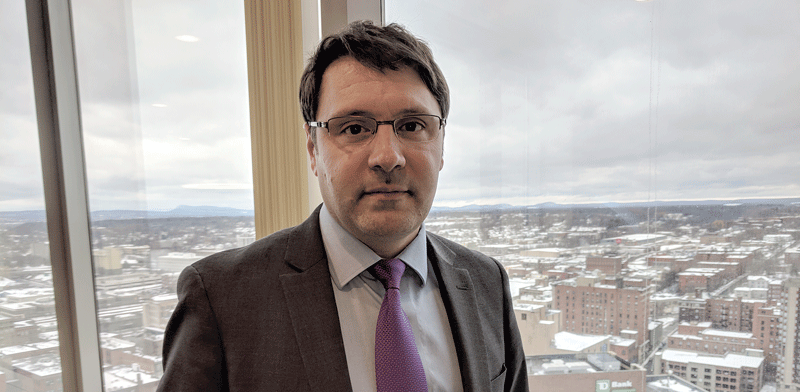
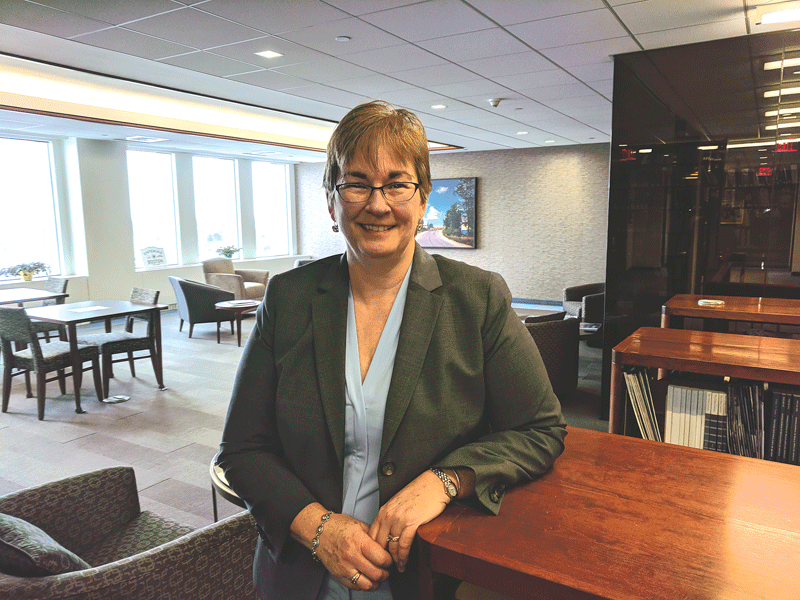
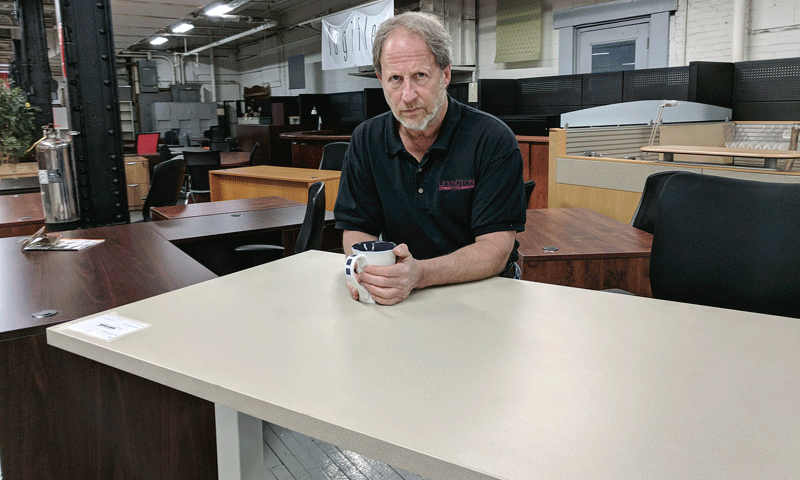

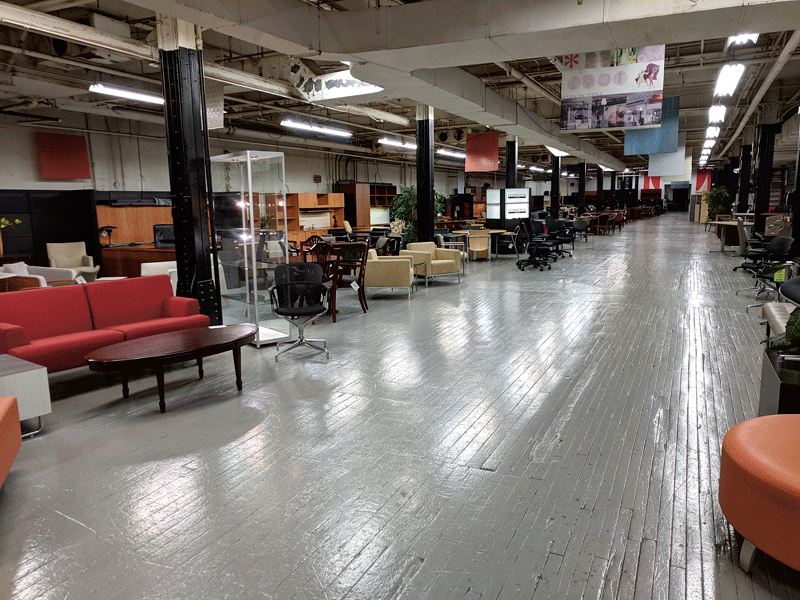
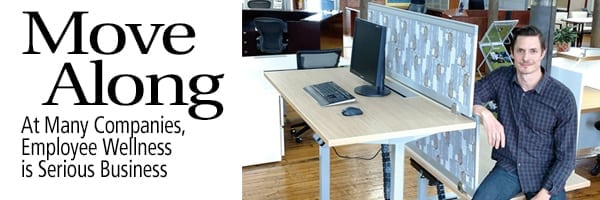
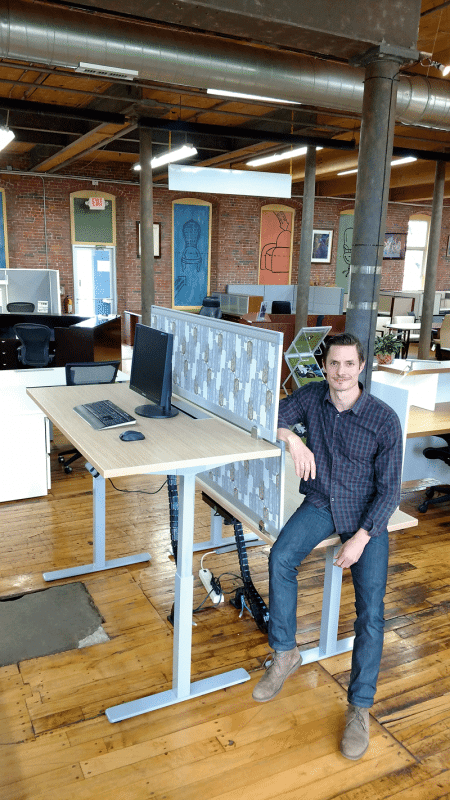
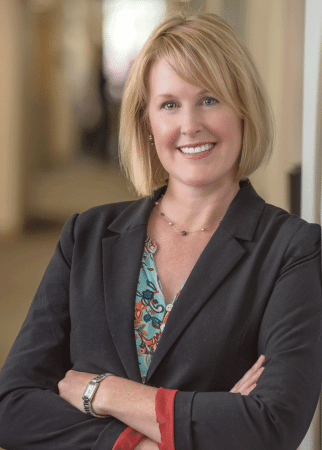
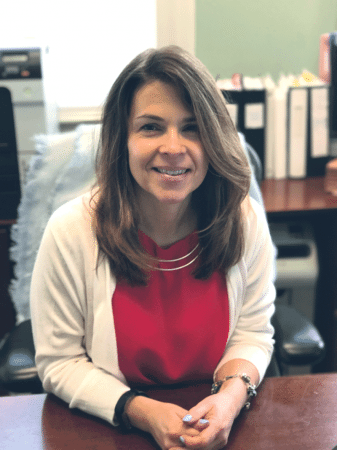




 One of the companies that called was the Springfield office of Merrill Lynch, which was having some issues with new information technology.
One of the companies that called was the Springfield office of Merrill Lynch, which was having some issues with new information technology.


